
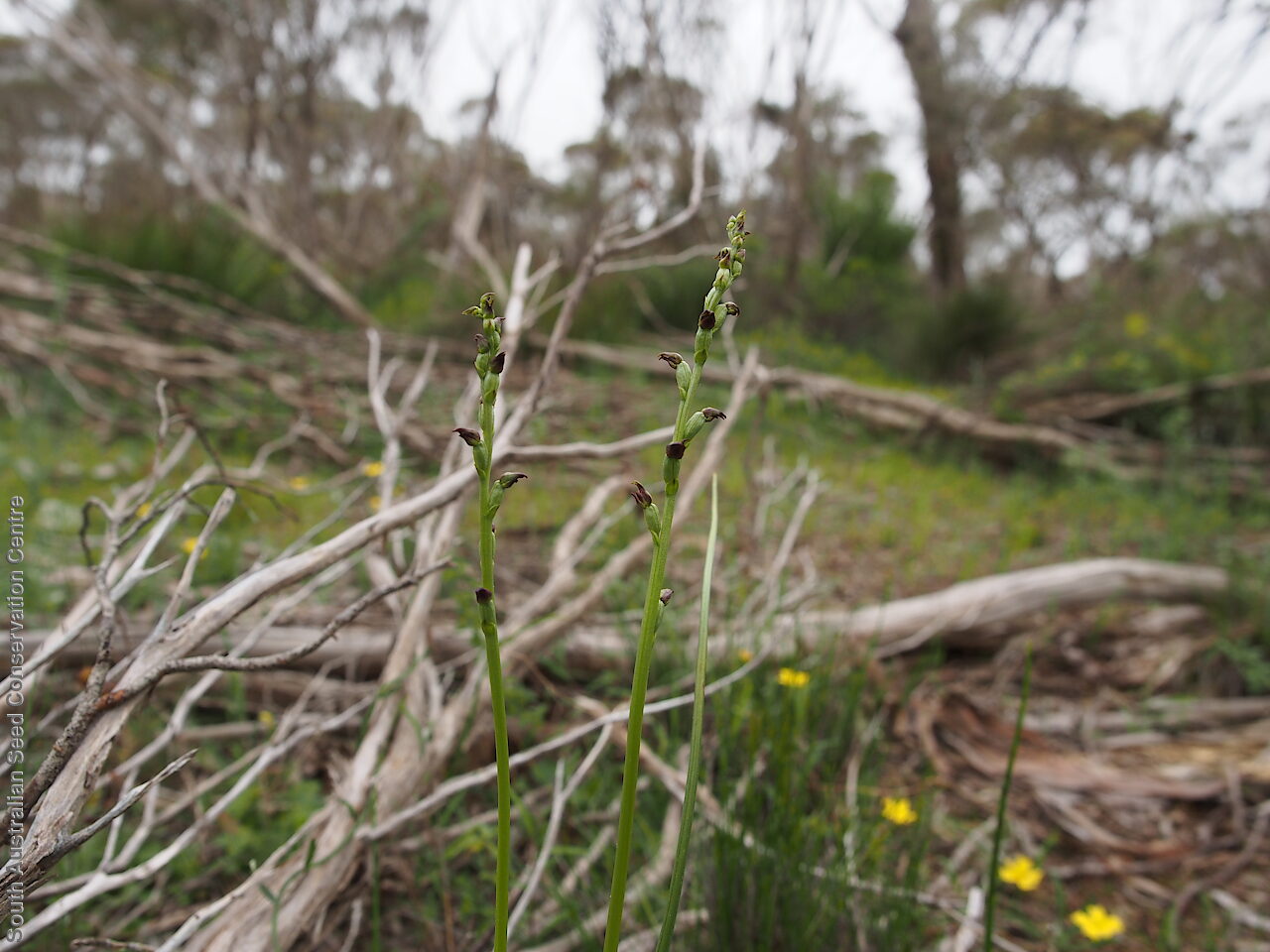
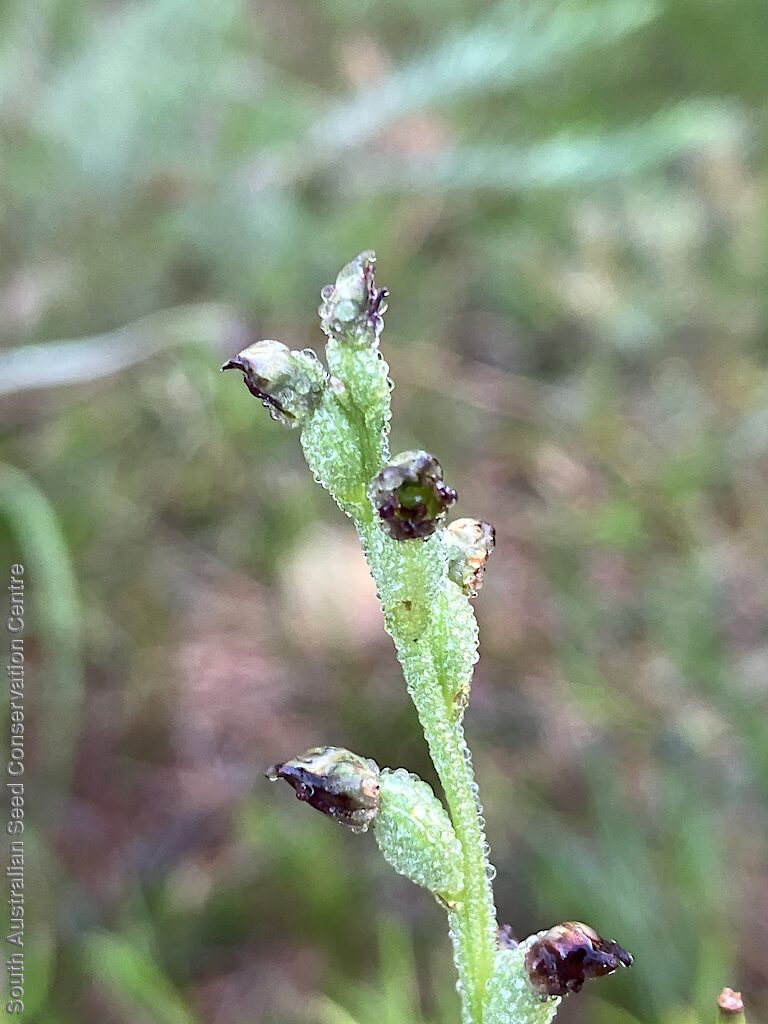
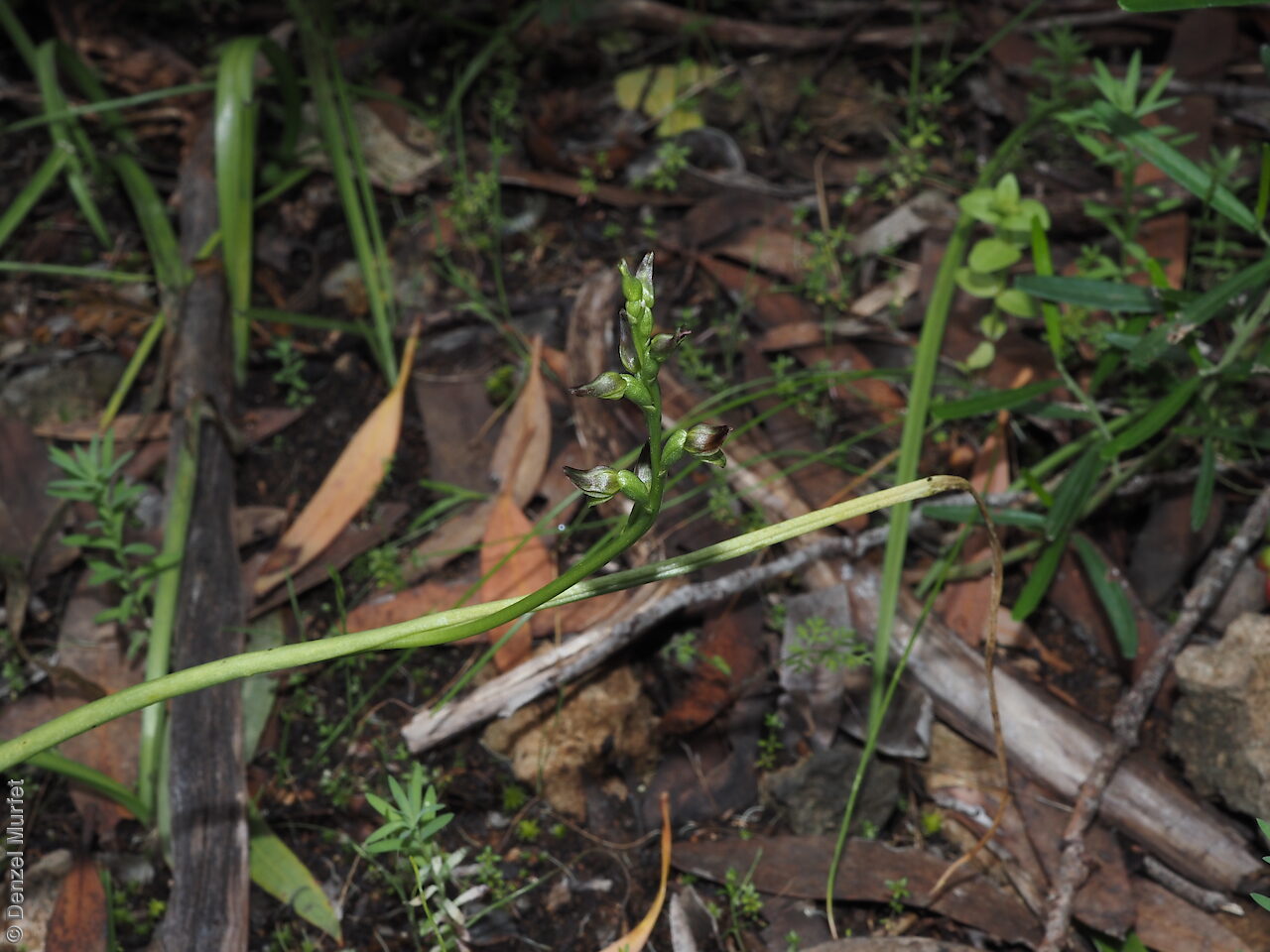
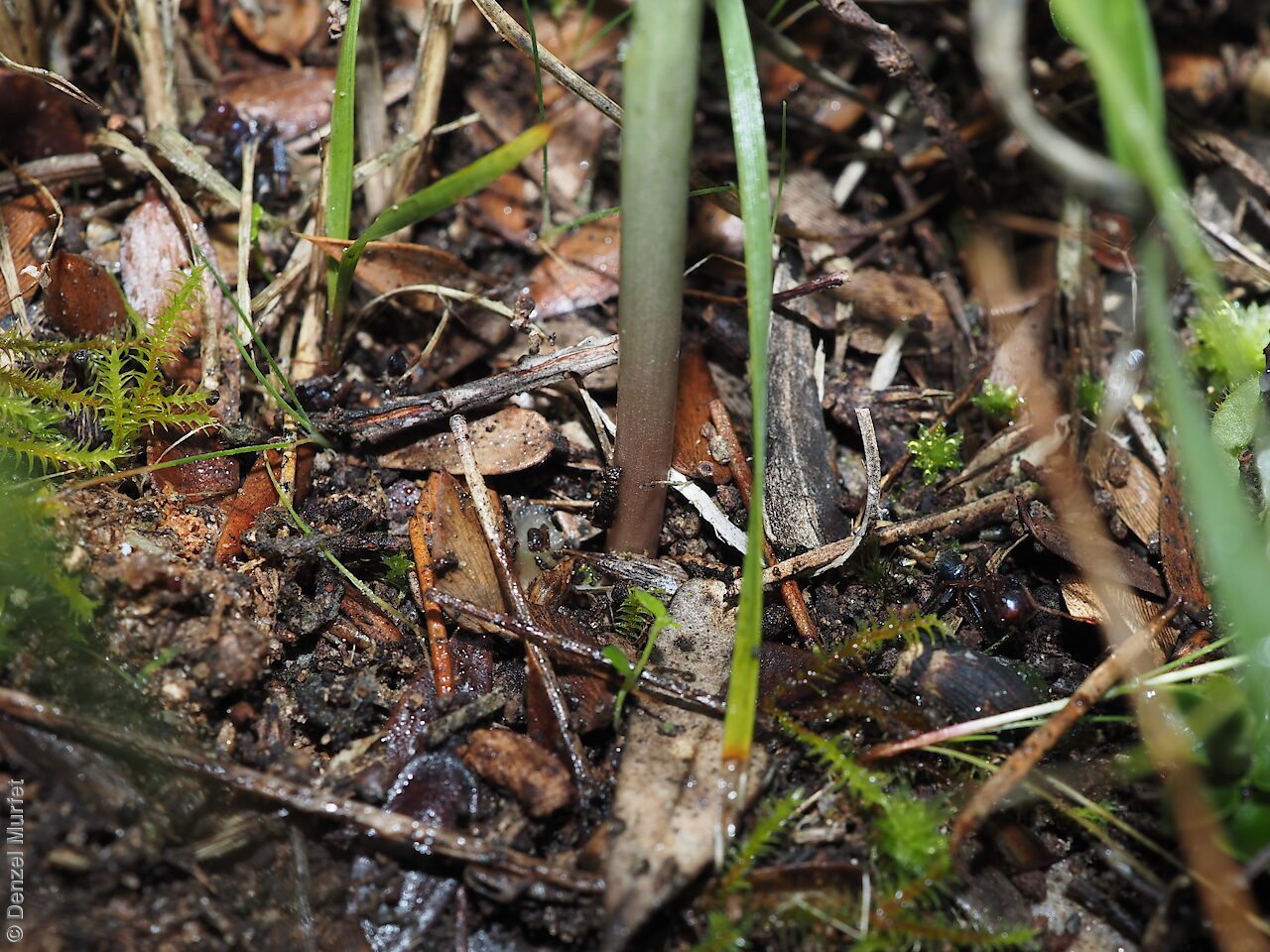
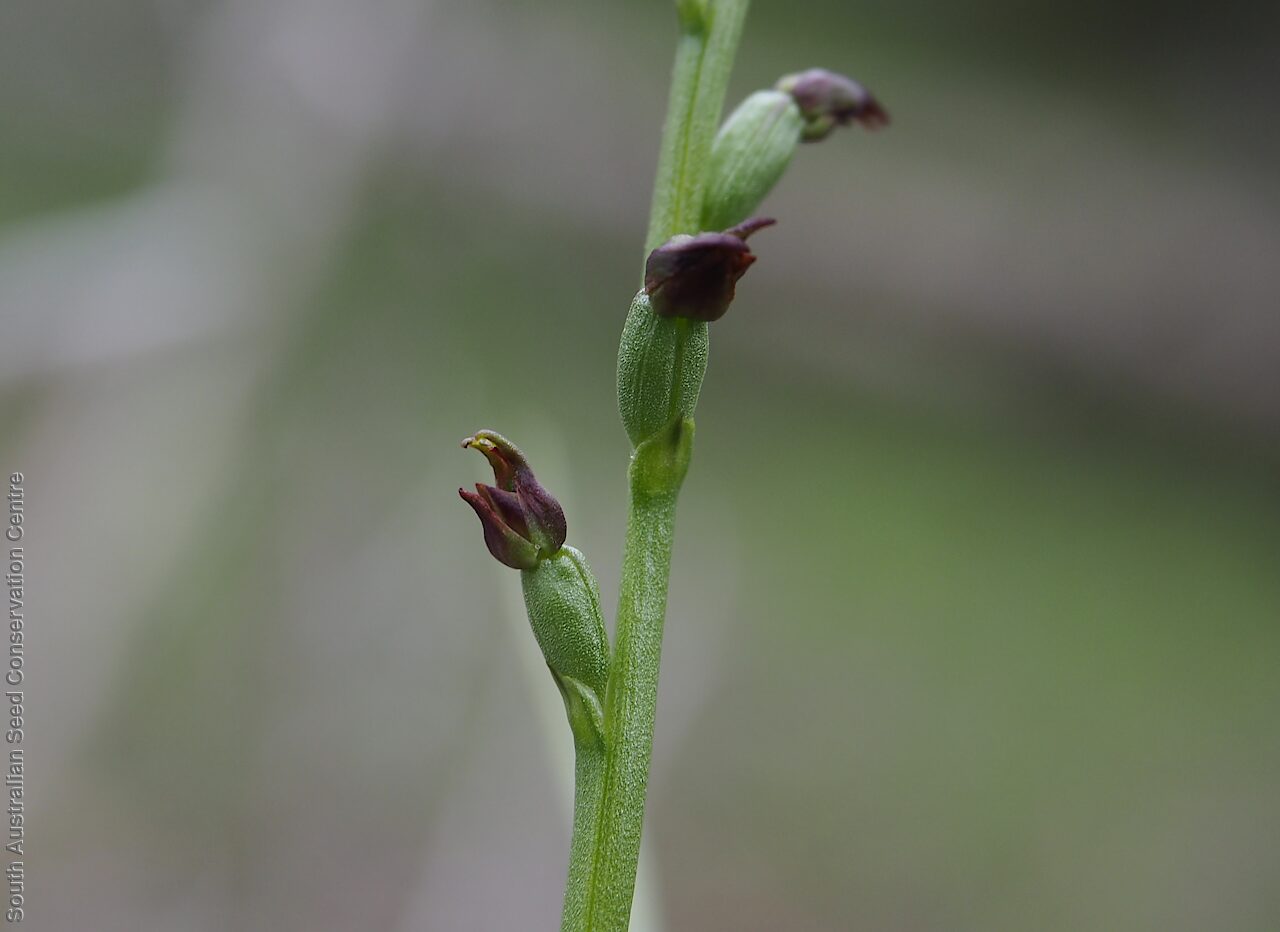
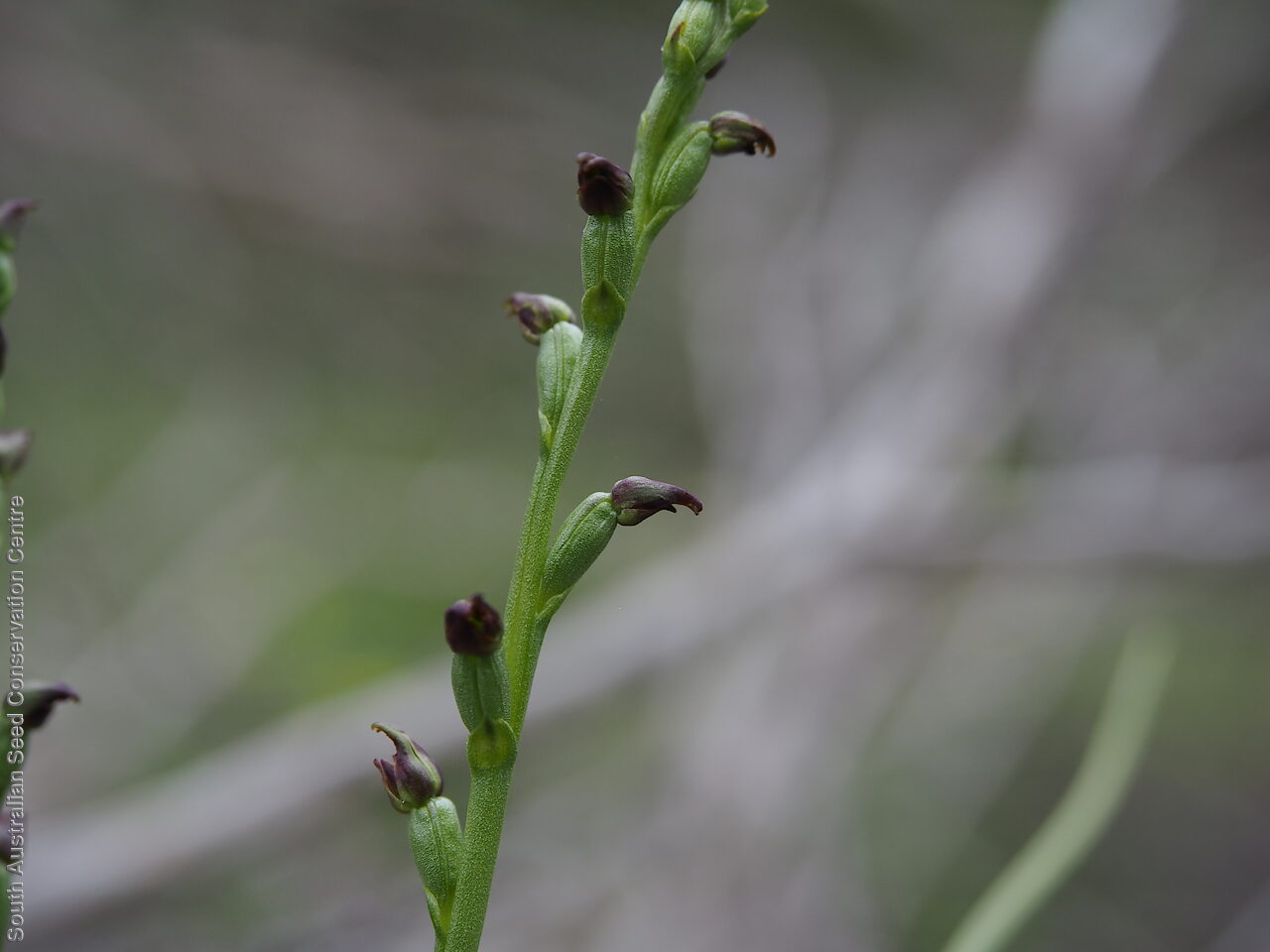
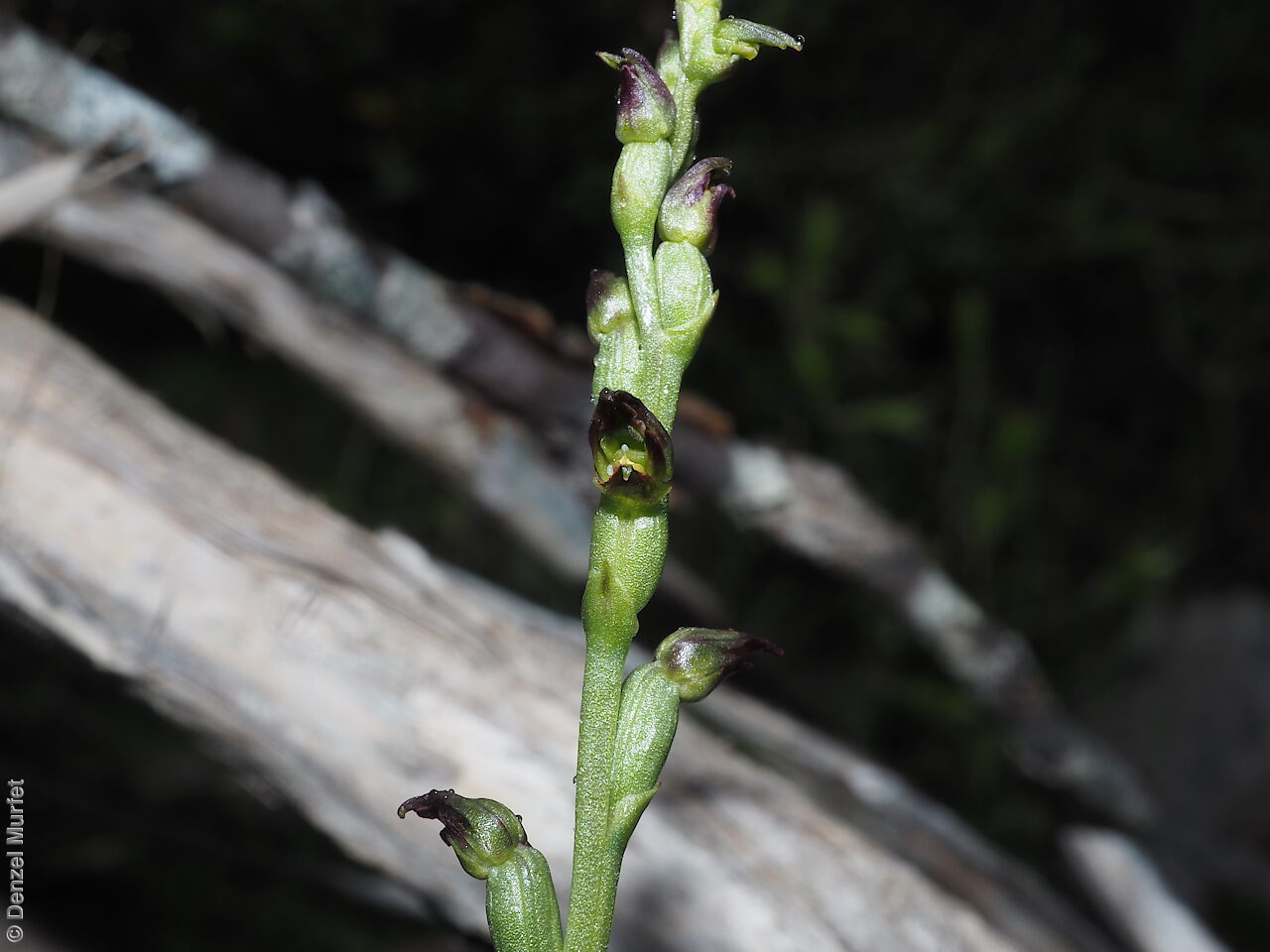
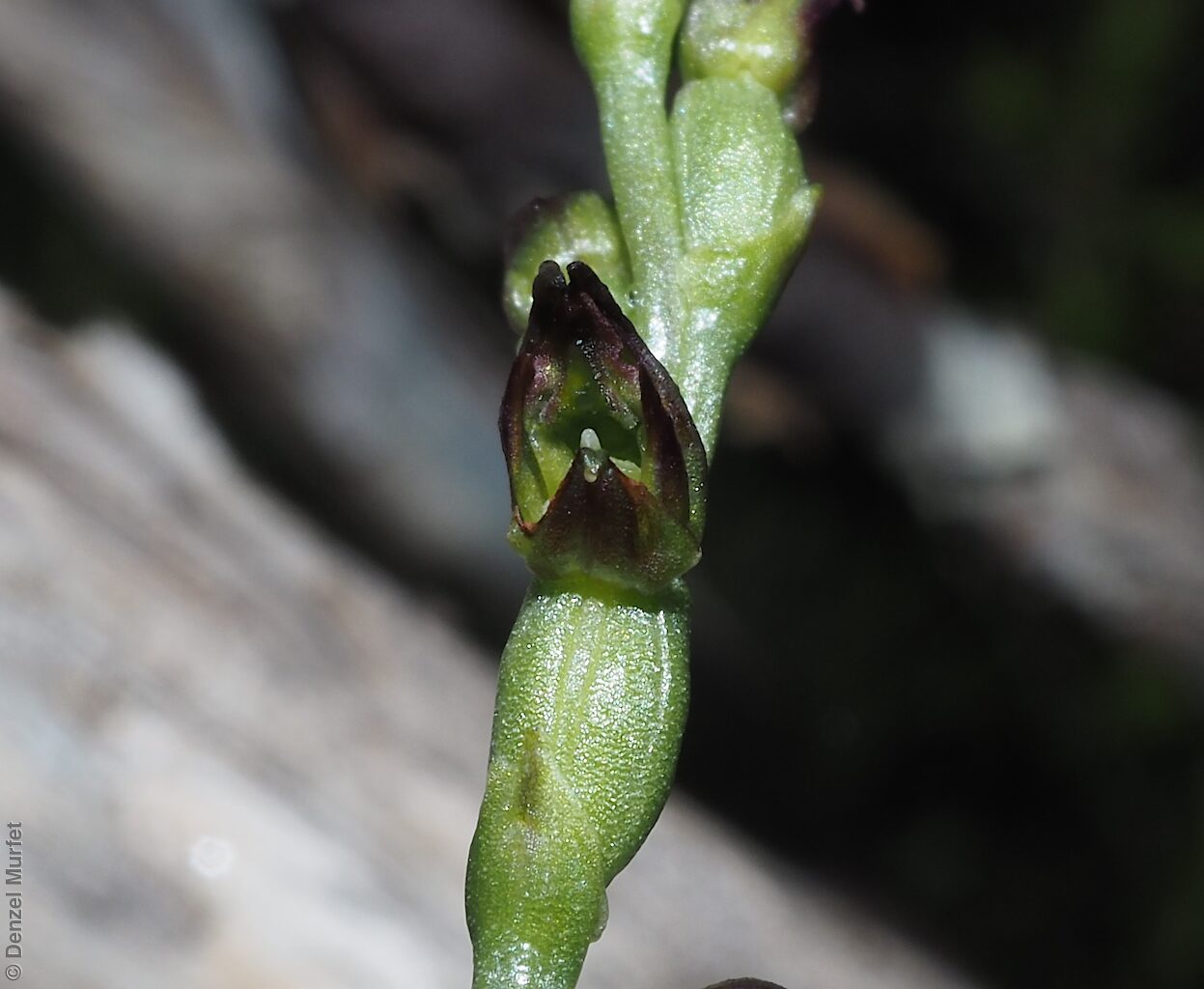
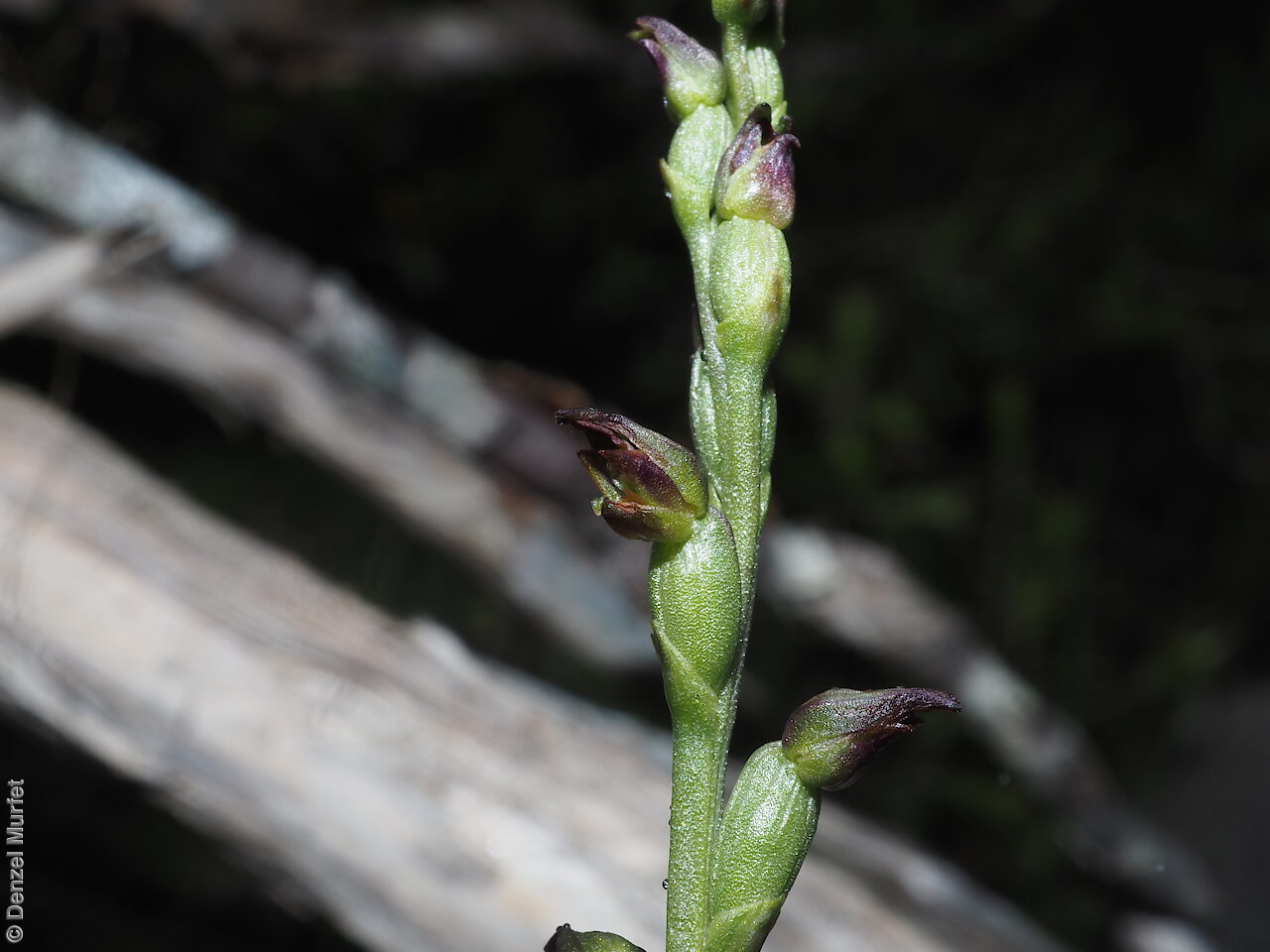
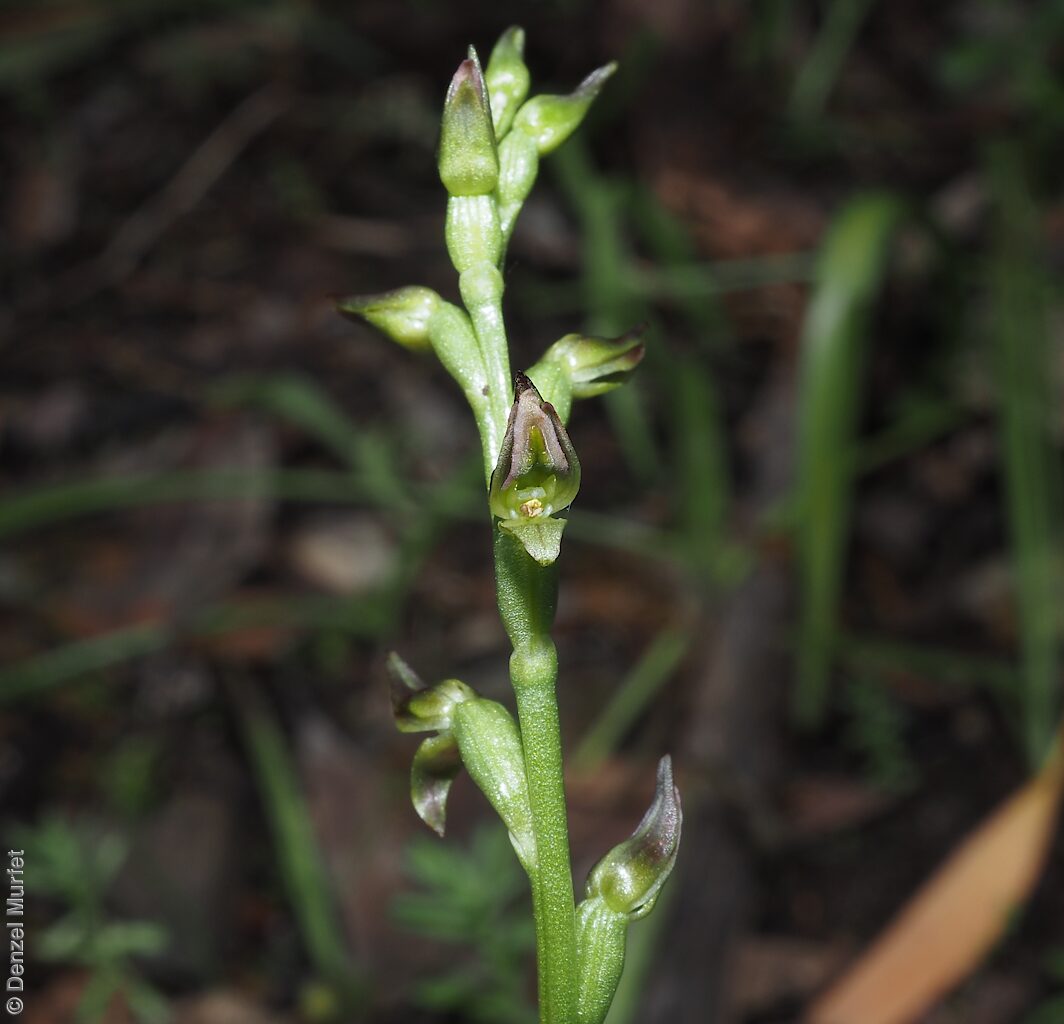
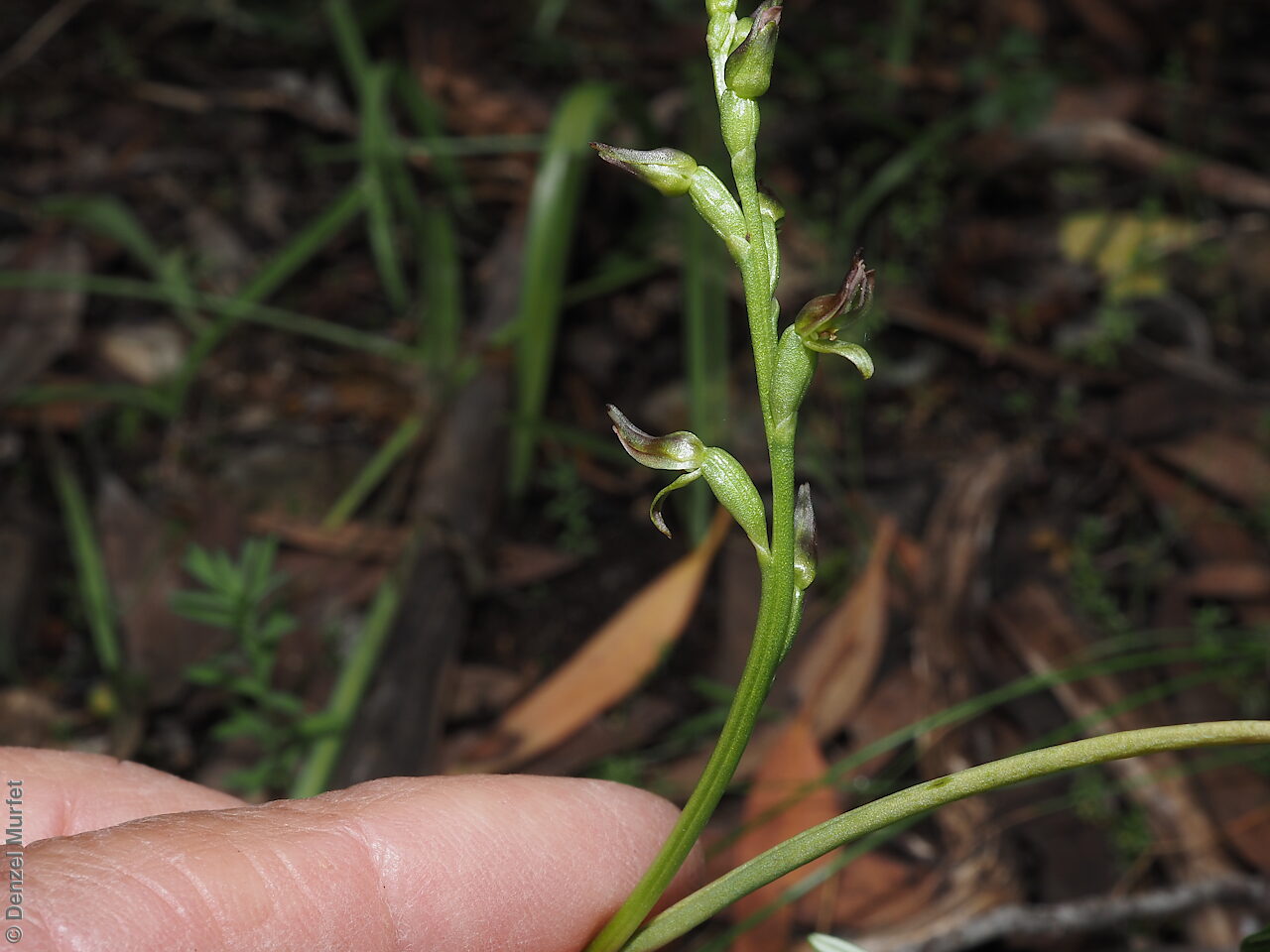
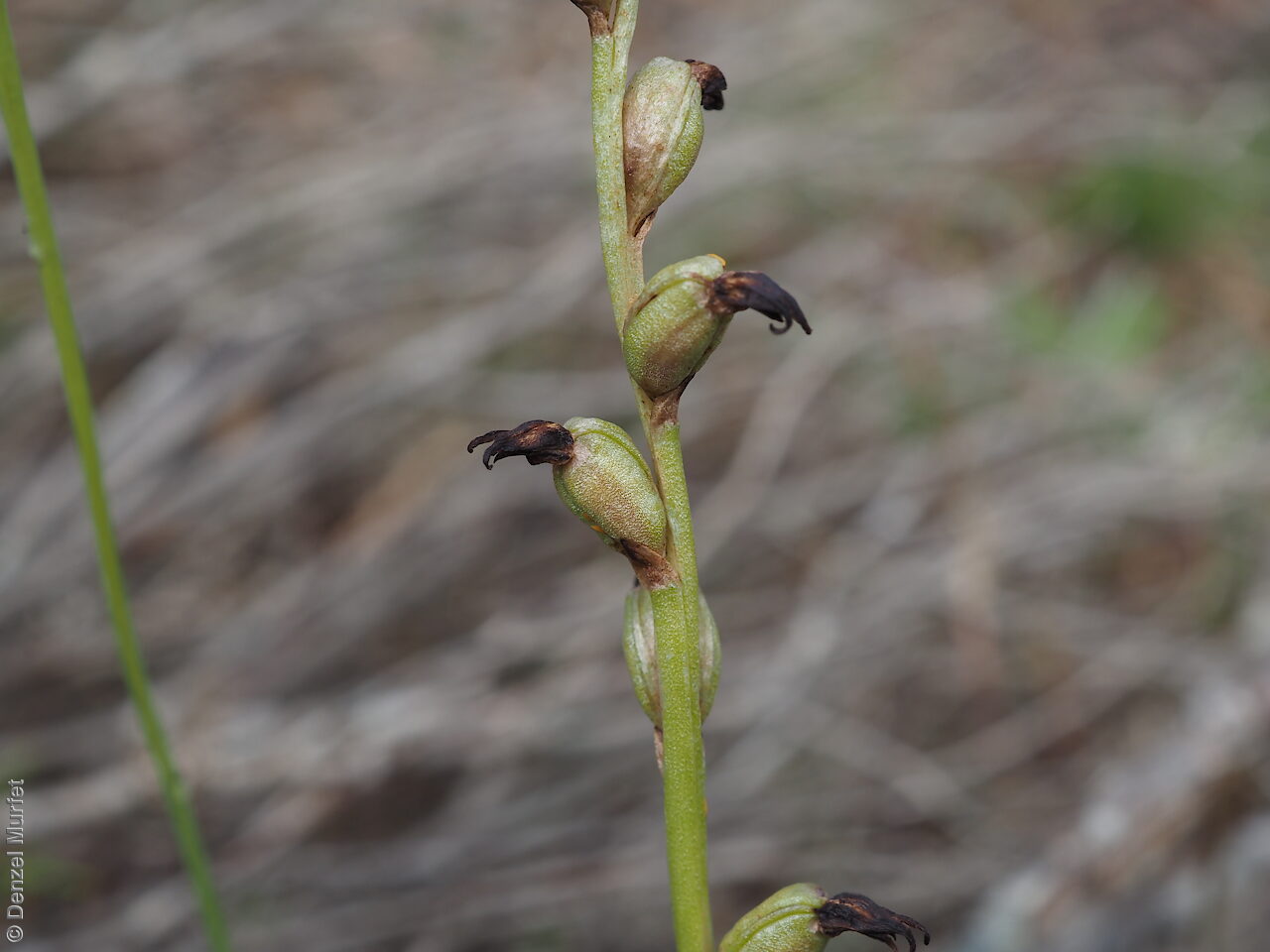
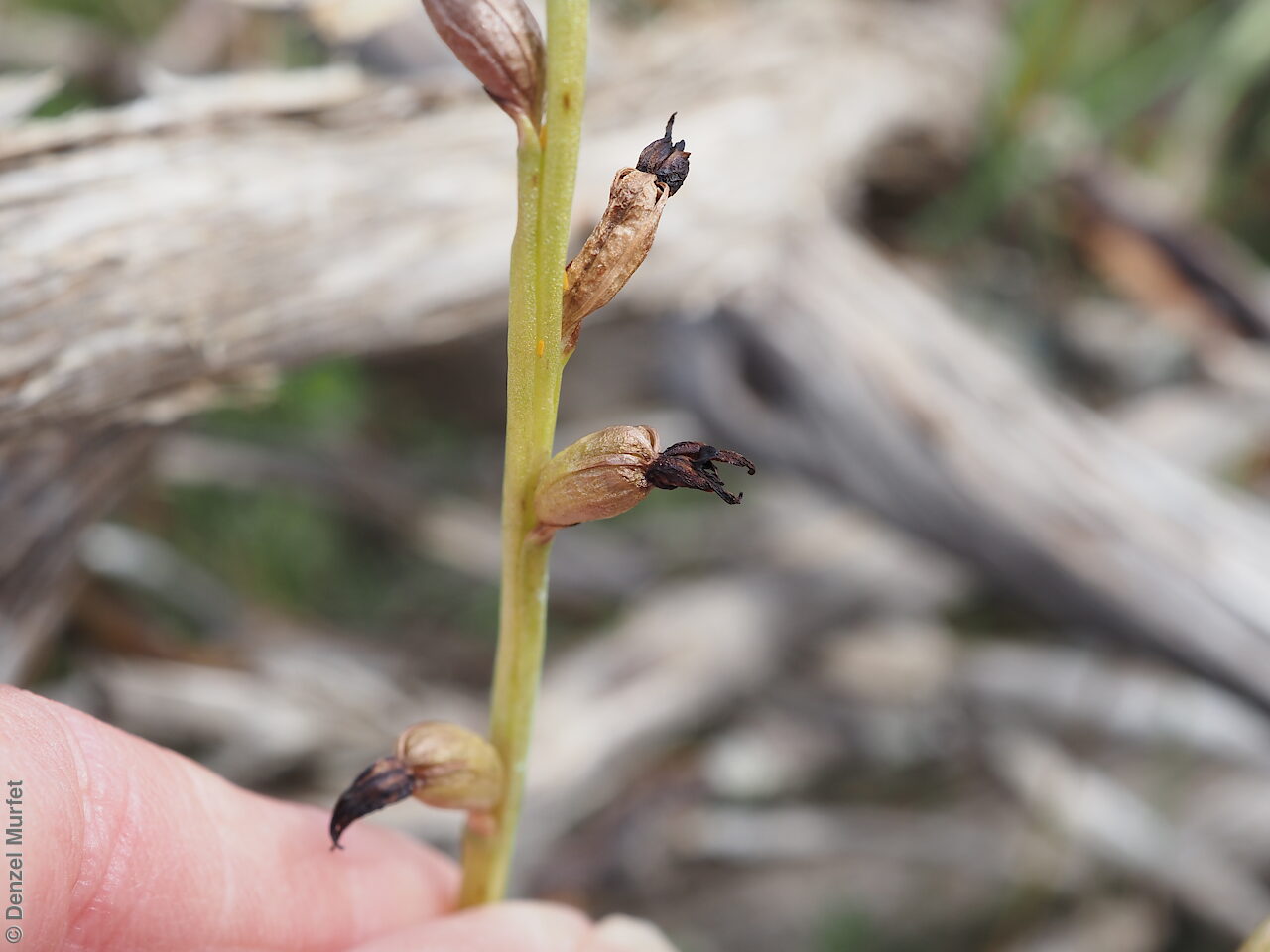

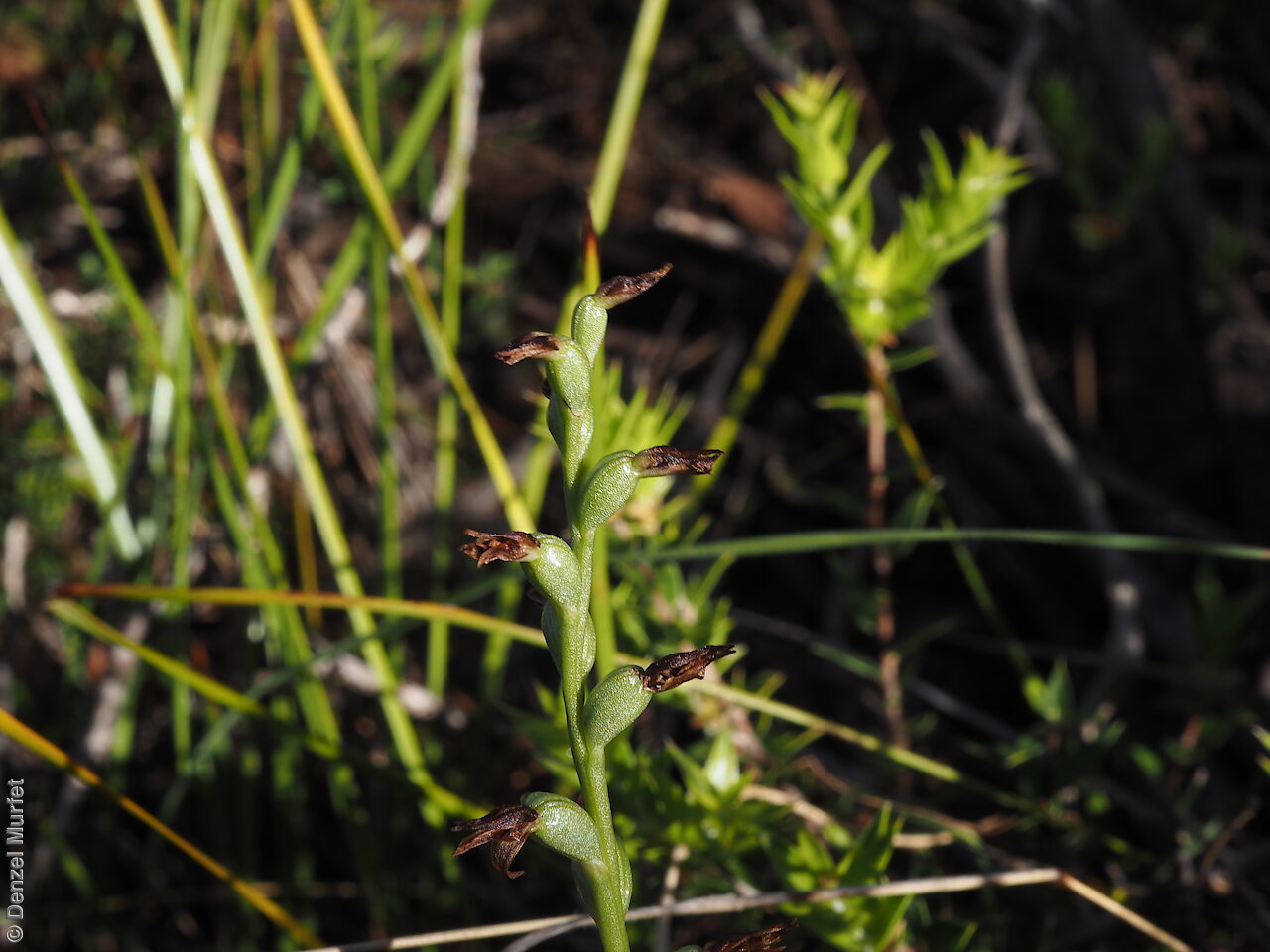


Botanical art
Etymology
Prasophyllum from the Greek 'prason' meaning a leek and 'phyllon' meaning a leaf, referring to the leek-like orchid leaf. Goldsackii named in honour of Harold Goldsack (1908 - 1989) who collected the type specimen and have been involved with native orchids for almost his whole life.
Distribution and status
Endemic to South Australia and found on the lower Eyre Peninsula and Yorke Peninsula, growing on limestone in shallow pockets of soil and in calcareous sands. Native. Very rare in South Australia. Endangered Under the EPBC Act.
Herbarium regions: Eyre Peninsula, Yorke Peninsula
NRM regions: Eyre Peninsula, Northern and Yorke
AVH map: SA distribution map (external link)
Plant description
Terrestrial orchid with slender stem to 30 cm tall. Leaf long and lax, blue-green often with a purple-red base, longer than the flowering stem. Inflorescence a loose spike with many green with brown or dark purple edges that only open occasionally. Dorsal sepal egg-shaped to 4 mm long and form a hood over the lower part of the flower. Lateral sepals curved to 5 mm long with the upper parts free from each other. Petals are triangular to 3 mm long and sometime hidden by the lateral sepals. Labellum triangular to 4 mm long and 2 mm wide, turn upwards with a wavy edge and two raised callus. Flowering between September to October. Fruits are pale brown papery ellipsoid capsules along the spike. Seeds are very small orange-brown ellipsoid seed with a long cylindrical translucent brown mesh-like covering.
Seed collection and propagation
Collect seeds between October and December. Collect fat capsules as they start to dry and turn brown. Pods will split and release the seeds quickly and will require monitoring. To increase the chances of collecting mature pods, it is recommended that a small breathable bag (ie. Organza bags) be used to enclose the developing capsules. Place the capsules in a container that will hold fine seeds and leave to dry for a few weeks or until the capsule split. Then carefully hold the capsule and tap it gently to release the seeds. Store the seeds with a desiccant such as dried silica beads or dry rice, in an air tight container in a cool and dry place, refrigerator or in liquid nitrogen. Seed germination in orchids is difficult in the absence of symbiotic mycorrhizal fungi.
| Location | No. of seeds (weight grams) | Number of plants | Date collected | Collection number Collection location | Date stored | % Viability | Storage temperature |
|---|---|---|---|---|---|---|---|
| BGA | 255,000 (0.182 g) | 15 | 2-Nov-2022 | BKB90 Yorke Peninsula | 21-Jun-2023 | N/C | -18°C, -80°C |
Number of plants: This is the number of plants from which the seeds were collected.
Collection location: The Herbarium of South Australia's region name.
% Viability: Percentage of filled healthy seeds determined by a cut test or x-ray.